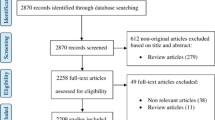Abstract
Animal models are important to develope therapies for individuals suffering from spinal cord injuries. For this purpose, rats are commonly preferred. In sharp injury models, spinal cord is completely or incompletely cut to assess axonal regeneration. On the other hand, spinal cord is compressed or contused to mimic the human injury in blunt injury models for understanding as well as managing the secondary pathophysiologic processes following injury. Especially, contusions are thought to be biomechanically similar to vertebral fractures and/or dislocations and thus provide the most realistic experimental setting in which to test potential neuroprotective and regenerative strategies.
Access this chapter
Tax calculation will be finalised at checkout
Purchases are for personal use only
Similar content being viewed by others
References
Fernandez E et al (1991) Experimental studies on spinal cord injuries in the last fifteen years. Neurol Res 13:138–159
Cheng H, Cao Y, Olson L (1996) Spinal cord repair in adult paraplegic rats: partial restoration of hind limb function. Science 273:510–513
Gruner JA (1992) A monitored contusion model of spinal cord injury in the rat. J Neurotrauma 9:123–126
Stokes BT (1992) Experimental spinal cord injury: a dynamic and verifiable injury device. J Neurotrauma 9:129–131
Jakeman LB et al (2000) Traumatic spinal cord injury produced by controlled contusion in mouse. J Neurotrauma 17:299–319
Kobayashi NR et al (1997) BDNF and NT-4/5 prevent atrophy of rat rubrospinal neurons after cervical axotomy, stimulate GAP-43 and Talpha1-tubulin mRNA expression, and promote axonal regeneration. J Neurosci 17:9583–9595
Schwartz G, Fehlings MG (2001) Evaluation of the neuroprotective effects of sodium channel blockers after spinal cord injury: improved behavioral and neuroanatomical recovery with riluzole. J Neurosurg 94:245–256
Blight AR (1992) Spinal cord injury models: neurophysiology. J Neurotrauma 9:147–149
Holmes GM et al (1998) External anal sphincter hyperreflexia following spinal transection in the rat. J Neurotrauma 15:451–457
Basso DM, Beattie MS, Bresnahan JC (1995) A sensitive and reliable locomotor rating scale for open field testing in rats. J Neurotrauma 12:1–21
Bresnahan JC et al (1987) A behavioral and anatomical analysis of spinal cord injury produced by a feedback-controlled impactiondevice. Exp Neurol 95:548–570
Kunkel-Bagden E, Dai HN, Bregman BS (1993) Methods to assess the development and recovery of locomotor function after spinal cord injury in rats. Exp Neurol 119:153–164
Soblosky JS et al (1997) Ladder beam and camera video recording system for evaluating forelimb and hindlimb deficits after sensorimotor cortex injury in rats. J Neurosci Methods 78:75–83
Hicks SP, D’Amato CJ (1975) Motor-sensory cortex-corticospinal system and developing locomotion and placing in rats. Am J Anat 143:1–42
Rivlin AS, Tator CH (1977) Objective clinical assessment of motor function after experimental spinal cord injury in the rat. J Neurosurg 47:577–581
Z’Graggen WJ et al (1998) Functional recovery and enhanced corticofugal plasticity after unilateral pyramidal tract lesion and blockade of myelin-associated neurite growth inhibitors in adult rats. J Neurosci 18:4744–4757
Cheng H et al (1997) Gait analysis of adult paraplegic rats after spinal cord repair. Exp Neurol 148:544–557
Belanger M et al (1996) A comparison of treadmill locomotion in adult cats before and after spinal transection. J Neurophysiol 76:471–491
de Leon RD et al (1998) Full weight-bearing hindlimb standing following stand training in the adult spinal cat. J Neurophysiol 80:83–91
de Leon RD et al (1998) Locomotor capacity attributable to step training versus spontaneous recovery after spinalization in adult cats. J Neurophysiol 79:1329–1340
Chau C, Barbeau H, Rossignol S (1998) Early locomotor training with clonidine in spinal cats. J Neurophysiol 79:392–409
Chau C, Barbeau H, Rossignol S (1998) Effects of intrathecal alpha 1- and alpha 2-noradrenergic agonists and norepinephrine on locomotion in chronic spinal cats. J Neurophysiol 79:2941–2963
Ducker TB, Hamit HF (1969) Experimental treatments of acute spinal cord injury. J Neurosurg 30:693–697
Ford RW (1983) A reproducible spinal cord injury model in the cat. J Neurosurg 59: 268–275
Griffiths IR (1976) Spinal cord blood flow after acute experimental cord injury in dogs. J Neurol Sci 27:247–259
Yeo JD et al (1975) The experimental contusion injury of the spinal cord in sheep. Paraplegia 12:279–298
Noyes DH (1987) Correlation between parameters of spinal cord impact and resultant injury. Exp Neurol 95:535–547
Noyes DH (1987) Electromechanical impactor for producing experimental spinal cord injury in animals. Med Biol Eng Comput 25: 335–340
Rivlin AS, Tator CH (1978) Effect of duration of acute spinal cord compression in a new acute cord injury model in the rat. Surg Neurol 10:38–43
Erbayraktar S et al (2003) Asialoerythropoietin is a nonerythropoietic cytokine with broad neuroprotective activity in vivo. Proc Natl Acad Sci U S A 27:6741–6746
Fehlings MG, Tator CH (1992) The effect of direct current field polarity on recovery after acute experimental spinal cord injury. Brain Res 579:32–42
Fehlings MG, Tator CH, Linden RD (1989) The relationships among the severity of spinal cord injury, motor and somatosensory evoked potentials, and spinal cord blood flow. Electroencephalogr Clin Neurophysiol 74:241–259
Leist M (2004) Derivatives of erythropoietin that are tissue protective but not erythropoietic. Science 305:239–242
Guha A et al (1987) Decompression of the spinal cord improves recovery after acute experimental spinal cord compression injury. Paraplegia 25:324–339
Celik M et al (2002) Erytropoietin prevents motor neuron apoptosis and neurological disability in experimental spinal cord ischemic injury. Proc Natl Acad Sci U S A 99:2258–2263
Gorio A et al (2002) Recombinant human erythropoietin counteracts secondary injury and markedly enhances neurological recovery from experimental spinal cord trauma. Proc Natl Acad Sci U S A 99:9450–9455
Grasso G et al (2006) Amelioration of spinal cord compressive injury by pharmacological preconditioning with erythropoietin and a nonerythropoietic erythropoietin derivative. J Neurosurg Spine 4:310–318
Author information
Authors and Affiliations
Editor information
Editors and Affiliations
Rights and permissions
Copyright information
© 2013 Springer Science+Business Media, LLC
About this protocol
Cite this protocol
Erbayraktar, Z., Gökmen, N., Yılmaz, O., Erbayraktar, S. (2013). Experimental Traumatic Spinal Cord Injury. In: Ghezzi, P., Cerami, A. (eds) Tissue-Protective Cytokines. Methods in Molecular Biology, vol 982. Humana Press, Totowa, NJ. https://doi.org/10.1007/978-1-62703-308-4_6
Download citation
DOI: https://doi.org/10.1007/978-1-62703-308-4_6
Published:
Publisher Name: Humana Press, Totowa, NJ
Print ISBN: 978-1-62703-307-7
Online ISBN: 978-1-62703-308-4
eBook Packages: Springer Protocols




